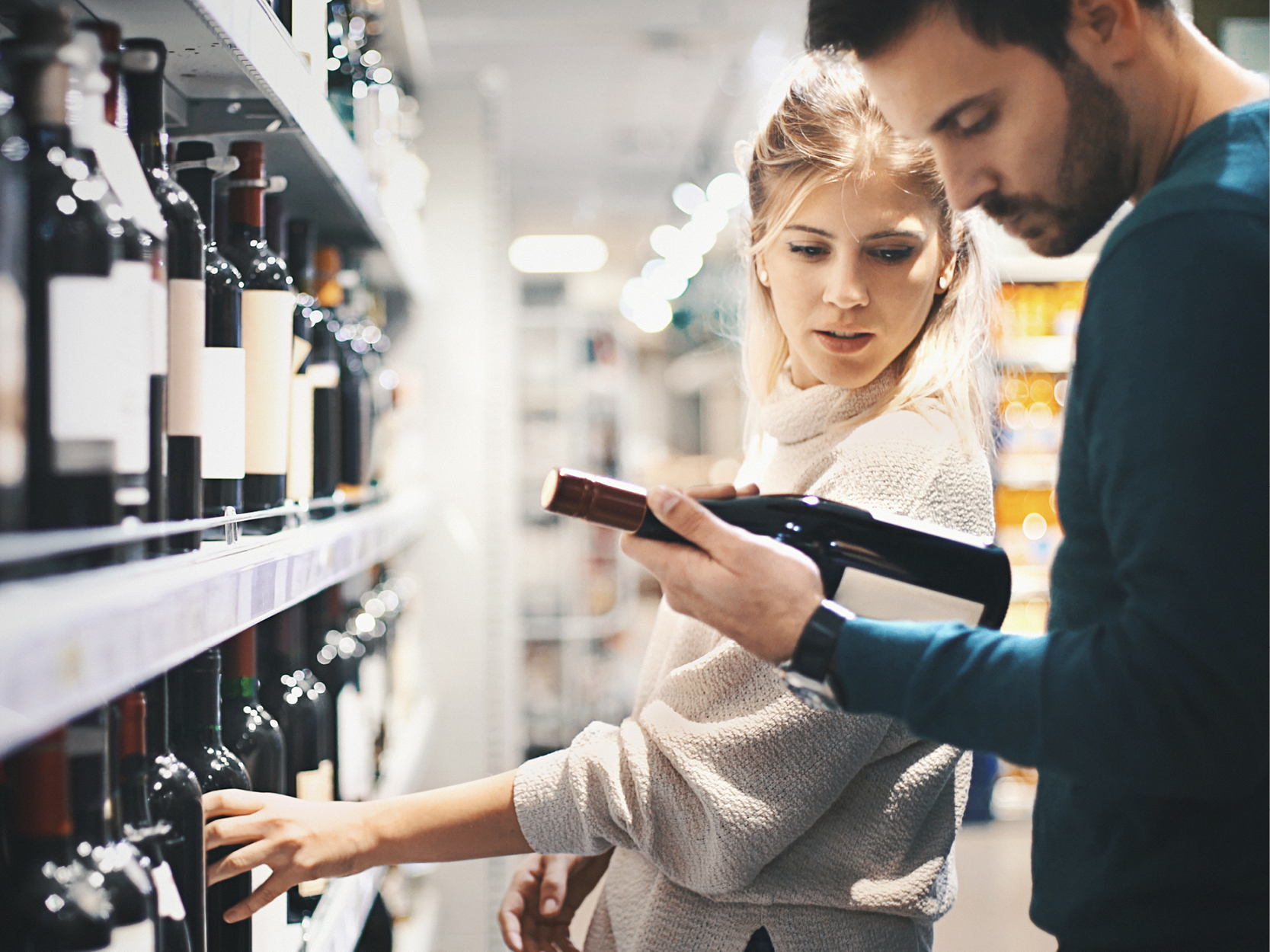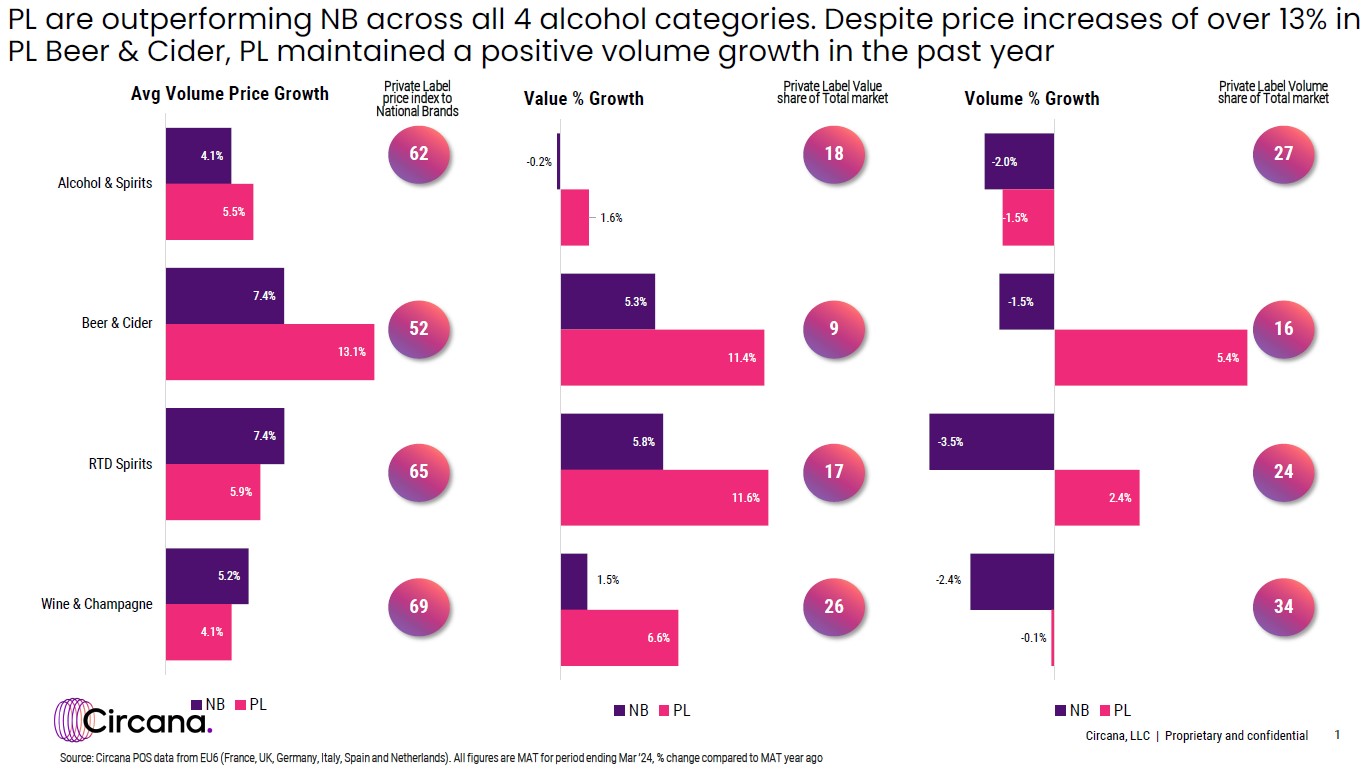
Private label growth for wine & Champagne continues
Private label is stealing a march across Europe, with retailer’s own offerings outperforming national brands across all the major alcohol categories in terms of value.
According to analyts at Circana, private label is on the rise across Europe’s six largest markets (UK, France, Italy, Germany, Spain and the Netherlands).
This is the case for almost all FMCG categories. Circana’s Demand Signals Category Monitor found that in the year to February, retailers and brand owners increasingly turned to promotions in order to boost sales in markets where the cost of living has dampened consumer spending power. Across FMCG categories, 21% of goods are now sold on promotion. Despite this, sales dropped in the most recent 12-month period, illustrating that promotions do not always generate the desired volume uplift.
Instead, consumers turned to private label products – which saw volume sales rise by 64% across all FMCG – including alcohol.
In data obtained by Harpers, it appears that value growth for spirits, beer & cider, RTD spirits, wine & Champagne all outstripped that of national brands (MAT to the end of March).
Ananda Roy, SVP Strategic Growth Insights EMEA at Circana, couched this phenomenon not just as a response to the market, but as an opportunity for growth.
He said: “After decades of global brands leading stable segments, we are witnessing category dynamism. Private labels are offering variety and innovative ranges of zero and low alcohol options, while RTD cocktails are an alternative to familiar brands. And of course the blurring of category boundaries with ambient soft drinks manufacturers and local brands offering (alcohol segment) consumers wider choice and experiences.”
The category has also experienced a wider FMCG trend of a closing pricing gap between private label and brands. Though private label is on the whole cheaper than national brands, Roy warned that the promotional standoff between the two, and the upward creep of prices, means the savings afforded to shoppers for switching to private labels is reducing.
Speaking of the total FMCG category, Roy highlighted how “strategy-obsessed and consumer-focused retailers” rushed to shore up volumes by reducing prices and increasing promotions. However, “the intended effect is likely to be dampened by high absolute prices, low innovation, competitive response and growing private label penetration.
“Over-saturating shelves with deep deals only risks increasing subsidisation… Manufacturers and retailers must look to organic growth through shopper activation, brand experience and one of marketing’s most dynamic levers, innovation,” he concluded.





